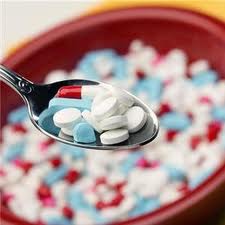By Pharm. John Badewo
Pharmacist: “Mama, welcome. How are you today?”
Madam Vero: “Oga Pharmacist, I no dey feel well at all o. I just dey pee plenty plenty and e dey make me drink water too much. All my body dey pain me like say them carry stone knack am. My hand, my leg I no dey feel dem again, be like say dem don die. Na “ikpai” we dey call am for my language. Abeg help me en, I no get enough money to chop this my body come carry wahala come again.”
Madam Vero (not her real name) is just one of many clients that presents herself at pharmacies with such complaints on a daily basis.
According to the World Health Organization (WHO), in 2011, an estimated 14.7 million adults on the African continent suffered from diabetes, resulting in approximately 344,000 deaths. WHO further estimates that these numbers will more than double by 2030 without urgent action.
Previously, it was thought that lifestyle diseases such as diabetes affected mainly the rich members of the general population, but recent data has proven that to be wrong. I like to playfully tell my clients that diabetes is now a disease of the rich, the poor and the hungry! As a matter of fact, I have come to discover that an increasingly larger percentage of my diabetic clients belong to the middle or low income class. The Diabetes Association of Nigeria (DAN) reported that at least 5 million Nigerians (approximately 2.2% mean national prevalence) are living with diabetes. The prevalence varies from 0.65% in rural Mangu (Northern Nigeria), to 6.8% in Port Harcourt City (Rivers State) to as much as 11.0% in urban Lagos.
So many patients like Madam Vero are not aware of their diabetic status, and may not have even heard about the condition before. If there is any time to do something about the WHO prediction of “more than double” the cases of diabetes by 2030, it is now.
According to the WHO, 90% of diabetes deaths are due to Type 2 Diabetes (T2D). While T2D can be prevented, controlled or managed in many patient cases, factors such as limited public awareness, inaccessibility of health facilities, insufficient access to affordable drugs, and poverty do not help.
Health practitioners must take proactive steps to abate the spread of T2D where possibly. WHO dedicated last year’s World Health Day to diabetes with the theme “BEAT DIABETES”. To support this mission, a non-governmental organization called Lighthouse Global Health Initiative launched a free blood sugar testing campaign. The campaign took place in three different states of Nigeria benefiting more than 200 participants, with full support from Lily Pharmacy, other corporate organizations and individuals.
WHAT IS DIABETES MELLITUS?
Diabetes mellitus is defined by the American Diabetes Association as a metabolic disorder characterized by the presence of hyperglycemia (raised/excess blood sugar) due to defective insulin secretion, insulin action or both.
Diabetes can be classified into:
- Type 1 (formerly tagged insulin dependent diabetes)
- Type 2 (formerly tagged non-insulin dependent diabetes)
Insulin is responsible for the regulation of sugar level in the blood. For the sake of this article, our focus will be on type 2 diabetes.
WHAT CAUSES DIABETES?
Type 1 diabetes occurs when the body cannot produce insulin. Thus, an external source of insulin is required for blood sugar regulation.
In Type 2, the body grows resistance to the insulin produced, the insulin production level later falls thus causing accumulation of sugar in the blood.
WHO IS AT RISK?
Your risk of developing diabetes increases as grow older, body shape and size are also important factors (obese people at a greater risk), sedentary lifestyle (zero physical activity/unhealthy eating habits), and family history of diabetes.
WHAT ARE THE SYMPTOMS?
The early symptoms are related to the raised blood sugar level. Such symptoms include frequent urination, excessive urination and thirst often leading to dehydration, weakness, and fatigue. Symptoms may come and go as blood sugar level fluctuates. Other symptoms include blurred vision, unexplained weight loss, numbness, skin infections, erectile dysfunctions. It is however possible to have a raised blood sugar without any symptom. A routine blood sugar test is thus recommended for everyone.
WHAT DO I DO IF I OBSERVE THESE SYMPTOMS?
You are advised to visit the nearest health facility to you where you can be screened by experts. If a diabetes diagnosis is confirmed, you will be guided on available treatment measures.
According to American Diabetes Association, diabetes mellitus is diagnosed if fasting blood sugar level (FBS) is greater than/equal to 126mg/dl (7mmol/L) or random blood sugar level of greater than or equal to 200mg/dl (11.1mmol/L) with symptoms of hyperglycemia.
CAN DIABETES TRULY BE PREVENTED?
Yes, diabetes can be prevented, depending on the level of risk factors and appropriate lifestyle changes. Obviously, risk factors such as age and family history can’t be controlled as you have no choice over them. However, people at higher risk of developing diabetes are advised to take proactive steps to improve their lifestyle and eating habits. Be careful not to add excessive weight over the years, eat right and healthy (eat more fibre-rich cereal products and vegetables in your daily food), exercise regularly, reduce/avoid alcohol intake, and avoid smoking. Your lifestyle choices can go a long way to prevent or at least delay the onset of T2D.
Reference:
EMDEX, Drug Comparisons & Therapeutic Details. Vol.3: 2014-2015 Edition
The Merck Manual, Nineteenth Edition, 2011.

